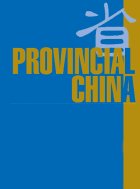| June 26 - 28, 2017 |
| Edinburgh, Scotland |
The following is a statement made by Mr. Enghebatu Togochog at a conference at the Scottish Parliament hosted by the Unrepresented Nations and Peoples Organization (UNPO) in collaboration with the Third Generation Project (TGP) and MSP Willie Rennie (Scottish Liberal Democrat) on June 26, 2017:
Distinguished members of the Scottish Parliament, members of UNPO, ladies and gentlemen,
Good afternoon! My name is Enghebatu Togochog. I am the Director of the Southern Mongolian Human Rights Information Center (SMHRIC), a New York based advocacy group dedicated to promoting and protecting the rights of the Mongolian people in the Chinese occupied Southern Mongolia, or known as “Inner Mongolia”.
As the People’s Republic of China was established in 1949, Southern Mongolia was officially annexed to China and became China’s first so-called “Autonomous Region”. Since then, the Chinese Communist Government’s policies of ethnic-cleansings, political witch-hunts, large scale population transfers, and forced cultural assimilation have devastated the social and cultural fabric of Southern Mongolia. In addition, it has led to a near total destruction of the natural environment in Southern Mongolia.
As a result of waves of Chinese migration, today, the Mongolians constitute only 18% of the total population on their own land; the natural grasslands where the Mongolians maintained their nomadic way of life for thousands of years have been destroyed earlier by Chinese farmers and later by Chinese extractives industries and other government projects.
As early as the mid 1940s, tens of thousands of Mongolians were brutally killed and Mongolian land was effectively taken over by the Chinese settlers during the so-called “Land Reform Movement”.
In the 1950s, a massive political witch-hunt was carried out against Mongolian elites in Southern Mongolia in the name of “Anti-Right Movement”.
From the late 1960s to early 1970s, the Chinese authorities carried out a massive genocide campaign in Southern Mongolia in the name of “purging the members of the anti-revolutionary treasonous group Inner Mongolian People’s Revolutionary Party”. According to the Chinese official statistics, 346,000 Mongolians were persecuted as national separatists and anti-revolutionaries, and 27,900 killed. The Mongolians widely believe the actual numbers are much higher than what the government disclosed. A generally accepted estimate is that at least one out of three Southern Mongolians was either arrested, imprisoned, maimed or tortured to death. The total Mongolian population in the region was around 1.5 million at the time.
In 1981, a large-scale Mongolian students’ movement took place in Southern Mongolia in protest of the Chinese authorities’ plan to speed up the Chinese migration to the region. Three months later authorities cracked down on the protesters and the Chinese migration continued.
In 1995, the Chinese Government cracked down on a Mongolian peaceful organization called the Southern Mongolian Democratic Alliance (SMDA). Members of the organization were arrested, detained and sent to jail. Mr. Hada, President of the organization and Mr.Tegshi, the Vice President, were sentenced to 15 years and 10 years in jail respectively on charges of “splitting the country and engaging in espionage”.
On December 9, 2014, after serving the full term of 15 years of imprisonment and 4 years of extrajudicial detention, Hada has been placed under a house arrest in an apartment run by the Chinese Public Security authorities. His freedom to communication and mobility are strictly restricted. His wife Xinna and son Uiles are also deprived of their basic freedoms and living under the same restrictions.
Starting 2001, to justify its systematic land grabs and to cover up their destruction of the natural environment, the Chinese government adopted the so-called “Ecological Migration” policy in Southern Mongolia. This policy was officially instituted to forcibly displace the entire Mongolian pastoralist population from their ancestral lands to the predominantly Chinese populated agricultural and urban areas under the pretext of “protecting the grassland eco-system.”
Another policy adopted for the purpose of eradicating the Mongolian traditional way life was the “Total Ban over Livestock Grazing” (or “jin mu”). Under this policy, Mongolian herders who graze their livestock in their own lands were charged as criminals and subjected to detention, large fines or confiscation of their livestock.
In 2009, with its largest coal and natural gas deposits in China, including production of 95% of the world’s rare earth supplies, Southern Mongolia was given the title of “China’s Energy Base” by the Central Government. Chinese extractive industries including state-run coal, gas and oil companies as well as thousands of private miners have poured into Southern Mongolia chasing their fortune. Herders’ grazing lands have been taken away and opened up for mines. Herders have forcibly been displaced from their land without adequate compensation or proper resettlement.
These policies combined with various government projects including “Western Development”, “Western Energy to the East”, “Ten Coverages” and the most recent “One Belt One Road” seemed to achieve their set goal with the desired outcome: putting to an end to the millennia-old nomadic civilization within the borders of China.
According to a statement posted on May 30, 2012 on the official website of the Chinese Central Government, the State Council Steering Committee meeting hosted by Chinese Premier Wen Jiabao passed the “Twelfth Five-Year Plan for the Project on Resettling Nomadic People within China”. The announcement marks a major and seemingly final step toward absorbing the entire population of nomadic peoples into a homogeneous Chinese society and eradicating the nomadic way of life once for all.
The Central Government website also detailed out the plan, claiming to resettle the remaining nomad population of 246,000 households or 1.157 million nomads by the end of 2015. The socio-economic and political purposes of the plan were stated “to accelerate the shift of development mode of pastoralism and to protect the natural environment of pastoralist communities, to maintain ethnic harmony and frontier stability, and to lay a firm foundation for building an all-around prosperous society”.
Another earlier statement posted on August 3, 2011 on the Chinese State Council website states that the Chinese Ministry of Finance allocated a special fund of 1.7 billion Yuan to the project of resettling nomadic herders particularly in “Xinjiang (including Xinjiang Development Corps), Inner Mongolia and Tibet”.
As the regime becomes increasingly oppressive and hastier in achieving its set goal, Southern Mongolians are rising up to defend their land, rights and very survival as a distinct people. Thousands of rural herders are standing up to protect their land, water and way of life across the region; Mongolian intellectuals are initiating various form of resistance campaigns to defend the right to use their language, practice their tradition, and reclaim their national identity.
Tensions have escalated particularly between the Mongolian herders and the Chinese authorities as clashes took place almost on a daily basis. In 2011, the brutal killing of a Mongolian herder named Mergen by a Chinese mining truck sparked a large-scale, region-wide protest by Mongolian herders and students. Chinese authorities mobilized the People’s Liberation Army and large numbers of police forces to crackdown on the protest.
Since then violent clashes have been widespread in rural Southern Mongolia. Defending the interest of the Chinese miners and settlers, the authorities are using excessive force, including police and prison system to crack down on the Mongolians. Many herders who defended their land and demand justice have been assaulted, injured, hospitalized, arrested, detained, and sent to jail.
As a result of large-scale unregulated mining, unscrupulous resource extraction and uncontrolled agricultural practices by the Chinese, Mongolian grassland ecosystem has seriously been destroyed; lakes and rivers are dried up; underground water is depleted; air and water is heavily polluted; the Mongolian herders who have been kicked out of their land have become landless, homeless and jobless on their ancestral land.
The Government of China must be warned that these humanitarian crises will be further deteriorated if the authorities fail to take immediate actions to redress the grievances of the Mongolian population and guarantee their right to basic survival.
Thank you,
Enghebatu Togochog
Director,
Southern Mongolian Human Rights Information Center





 Beyond
Great Walls: Environment, Identity, and Development on the Chinese
Grasslands of Inner Mongolia
Beyond
Great Walls: Environment, Identity, and Development on the Chinese
Grasslands of Inner Mongolia China's
Pastoral Region: Sheep and Wool, Minority Nationalities, Rangeland
Degradation and Sustainable Development
China's
Pastoral Region: Sheep and Wool, Minority Nationalities, Rangeland
Degradation and Sustainable Development The
Ordos Plateau of China: An Endangered Environment (Unu Studies on
Critical Environmental Regions)
The
Ordos Plateau of China: An Endangered Environment (Unu Studies on
Critical Environmental Regions)